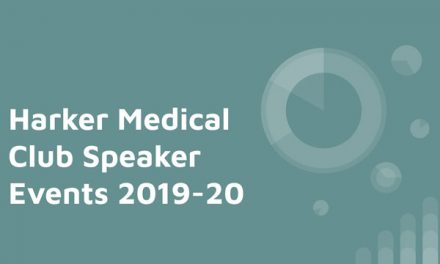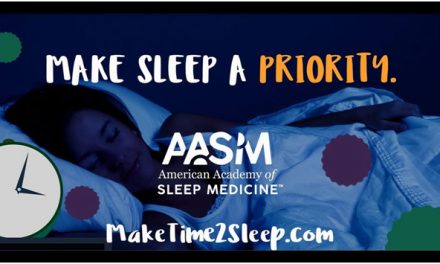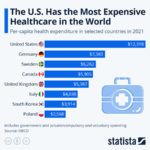A few weeks ago, I took part in an international health policy competition known as the Case Study Competition of the 2020 Harvard College Global Health and Leadership Conference. High school students were asked to respond to a prompt regarding mental health challenges for both patients and clinicians caused or exacerbated by the COVID-19 pandemic. In our policy brief, my team offered three policy alternatives, one directly addressing mental health with two others aimed instead at upstream determinants of mental health. Here is my team’s entry for the competition that was awarded 2nd place at this conference.
Feeling Down: Addressing the Mental Health Epidemic in the Wake of COVID-19
Executive Summary
The U.S. mental health crisis threatens to grow unchecked as depression and anxiety become increasingly common in the wake of a widespread loss of employment and food security, threatening to add untold suffering and deaths on top of those directly caused by COVID-19. We propose three policy recommendations to be funded by the federal government but implemented in tandem by local and state governments in order to afford a tailored, precise response. Firstly, providing free crisis counseling through the use of technology and the internet in empty public elementary and secondary schools will ensure equitable access to mental health services. Secondly, creating millions of public sector jobs in public health and public works, as well as training for these workers, will address mental health caused by a lack of employment while also better fighting COVID-19 and revitalizing American infrastructure. Finally, we propose giving special attention to the increased funding of the Supplemental Nutrition Assistance Program (SNAP), which will help address the food insecurity felt by one in two children and one in three adults. Fighting food insecurity will raise people out of poverty and go a long way to addressing their anxiety and depression.
Background and Scope of the Problem
The onset of COVID-19 has clearly caused life losses and an economic recession, yet this pandemic may also exacerbate the international mental health epidemic. Prior to the onset of COVID-19, 40 million Americans suffered from an anxiety disorder, yet less than two in five received treatment for their condition (ADAA, 2018). Major depressive disorder (MDD) similarly affects 16.1 million Americans, but an alarming 38.3% of these patients lack treatment (ADAA, 2019). Anxiety and depression have a well-documented link to suicide and are associated with heart disease (59% increased risk), diabetes (37% increased risk), and more (Harvard Health Publishing, 2018; Holt et al., 2015). Anxiety and depression cause significant mental trauma while also shaving years off patients’ lives.
The economic devastation of COVID-19, from jobs, lost and food instability threatens to cause a deadly spike in depression and anxiety in the United States. Indeed, because of the COVID-19 pandemic, 43 million Americans, or one in four U.S. workers, have lost their jobs, filed for unemployment, and, in part because of losing their jobs, over 30% of adults and 50% of children could face food insecurity, defined as not having consistent food access (Ivanova, 2020; Feeding America, 2020). For the nearly 17 million healthcare personnel who continue to work during the pandemic, chronic anxiety associated with daily putting oneself at risk without proper protection and witnessing a plethora of patient death threatens to burnout and increase the suicide risk for these professionals (Panchal et al., 2020). Compounded with physical distancing where we can lose the mechanisms used to cope with mental illness, the U.S.’s mental health crisis promises to grow unchecked and cause devastating consequences to a population already battered by COVID-19, absent intervention by federal and local governments.
Policy Alternatives
The U.S. government has not prioritized mental health directly but has targeted the issue from secondary vantage points, such as using the Defense Production Act to produce ventilators and personal protective equipment (PPE) and by giving out $1200 stimulus checks to low-income citizens and small business loans with the CARES act (Watney and Stapp, 2020). The HEROES act passed by the House would give $600 million to state unemployment benefits and more stimulus checks but faces tough roads in the Senate ahead (Bolton, 2020). Several splintered non-profit groups, such as the 4077th Mental Health Service Corps, Crisis Text Line, and The National Suicide Prevention Lifeline, are providing free crisis counseling from therapists, psychologists, and psychiatrists, yet these approaches often require access to technology and the internet in order to function, which begets a lack of equitable access (The Center for High Impact Philanthropy, 2020).
To combat the mental health epidemic both directly and indirectly, we propose a three-tiered solution. All three solutions offered will require funding from the federal government, which has fiscal tools such as the Federal Reserve and the National Debt, and implementation by state and local governments. While state governments will direct resources, local governments will implement said programs in order to provide highly personalized solutions that address the needs of the community and come from a trustworthy source.
We first propose setting up a large-scale program of crisis counseling for patients and healthcare personnel alike to directly combat the lack of mental health service in the nation. To combat the lack of access to telehealth among the homeless or those in poverty, we propose using the computers and internet access already in place in the 130,930 public elementary and secondary schools in the United States (Education Data, 2020).
Secondly, reminiscent of the New Deal which helped raise the country out of the Great Depression, we propose a nationwide retraining program to help the over 40 million Americans who have been unemployed become trained as public works and health workers. Not only will we help fill the public health jobs in disadvantaged communities and help fix America’s crumbling infrastructure, providing public sector employment will go a long way to combating depression and anxiety as public health sector jobs are more stable, provide quality benefits, and may offer employment guarantees.
Finally, we propose to increase funding to the Supplemental Nutrition Assistance Program (SNAP), which is more popularly known as food stamps. Much of the anxiety and mental health disorders stemming from COVID-19 arises from a lack of food security as individuals worry about being able to feed themselves and their families. SNAP proves an important aspect of the social safety net and is being strained by the unprecedented number of people seeking unemployment benefits. Furthermore, SNAP has been underfunded with most families spending 80% of their monthly funds within the first two weeks. As SNAP directly targets struggling low-income Americans, SNAP is the epitome of a pro-equity policy that helps address the mental health-related to food insecurity.
Policy Recommendations
Crisis Counseling
Telehealth counseling services provide critical access to mental health services in a time when physical distancing is the norm. A survey conducted by the Kaiser Family Foundation found that 47% of those sheltering in place have experienced negative mental health effects from COVID-19 (Panchal et al., 2020).
Existing “telenurse” organizations include Teladoc Health, AM Well, and MD Live are already providing services nationwide as well as stress-relieving interactive videos for the general public to help patients “participate in their own care needs because they, or their family, can access the videos independently” (Capone, 2020). However, given a lack of internet and technology access among the homeless and impoverished, existing telehealth discriminates against the disadvantaged who often need mental health services the most (Simon et al., 2018). As the 130,930 public elementary and secondary schools in the U.S. are empty because of virtual learning and the impending summer vacation, these schools, which are almost entirely equipped with computers and WiFi capabilities, could provide 24/7 hubs of telehealth for the disadvantaged (Education Data, 2020). Public sector jobs would be created in that clerks will be needed to ensure physical distancing is maintained and patients are guided through the process, the local government would coordinate access to schools, and therapists, psychologists, and psychiatrists would be conscripted from public hospitals and the previously mentioned nonprofit telehealth services under one national hub. These experts would be able to provide crisis counseling to not only the disadvantaged patients who need them but also to frontline healthcare personnel after hours to help address burnout and other mental health concerns, decreasing the risk of being infected with virus-based on physical interaction. Thus, a viable opportunity is offered for those who are experiencing increasing signs of depression and anxiety with the proper services from skilled experts.
Public Sector Jobs
An increase of public sector jobs is required to fight the increasing amount of mental health disparities including depression and anxiety. For the over 40 million Americans that are now unemployed, a lack of a job begets greater insecurity and anxiety due to threats of eviction, utilities being shut off, etc. Historically, the New Deal provided millions of public sector jobs that, with World War II, lifted the nation from the Great Depression (Carpenter and Hamilton, 2020). A similar expansion of the public sector, regarding public health and public works, is needed to alter the situation.
Since 2008, there has been a loss of 55,000 public sector jobs, and the nation more broadly is suffering from a deficit of 250,000 public health workers (Carpenter, 2020). Public hospitals declined from 718 in 1970 to 426 in 2010, and the loss of these free clinics disproportionately targeted poorer, minority, and rural communities (Carpenter, 2020). The U.S. was caught flat-footed with the pandemic because of this underinvestment in public health, but COVID-19 presents the opportunity to ameliorate these wrongs. It is projected that the staffing of public health clinics would create more than 500,000 jobs, leading to fewer deaths than COVID-19 cases (Carpenter and Hamilton, 2020). In addition, as states lift physical distancing restrictions, there will be countless jobs for people to do contact tracing and for people to teach contract tracing (Carpenter, 2020). These jobs would only provide a dent in the 40 million unemployed but are worth emphasizing because healthcare workers are being overwhelmed with COVID-19 and with the creation of public health jobs, it would manage their tireless work as well as depression and anxiety (Greenberg et al., 2020).
In order to provide widespread employment, the U.S. should look to Canada, which has a 19% public sector employment rate, compared to America’s 15%. Bridging that 4% gap would provide 8 million people with jobs, perhaps to address America’s crumbling infrastructure (Thompson and Matousek, 2019). Public work jobs may involve fixing airports, bridges, and dams—especially important given the breakage of the Michigan Edenville Dam. Giving these jobs out equitably would solve major structural issues in the nation while providing unemployed Americans with life-sustaining work. Job instability is a major stressor for anxiety and depression, so public sector jobs, especially in the healthcare field and public works, would assist the nation’s mental health epidemic (Carpenter and Hamilton, 2020).
Supplemental Nutrition Assistance Program
Although Americans are facing countless varied difficulties, food security related to economic insecurity is one of the key problems that individuals are facing. Following the Great Recession began in 2007, food insecurity rose about 30 percent the following year, and COVID-19 promises to increase that number to over 30% of adults and 50% of children if immediate actions are not taken to aid those in need (Bleich, 2020; Feeding America, 2020; North, 2020). Food insecurity is a critical cause for depression and anxiety as everyone needs food and not having adequate access causes a great deal of tension (Whitaker et al., 2006). Furthermore, malnourished people put themselves at risk of other health conditions, including declined immune system response and brain atrophy (NCOA, 2020). Additionally, those who experience food insecurity are overwhelmingly impoverished and come from minority communities. SNAP offers vital protection to these people, serving as a pro equity policy that targets rising inequality and thus mental health conditions.
SNAP has helped 38 million Americans afford food and lifted 3.2 million Americans out of poverty in 2018 (Bleich, 2020). In spite of being poorly funded, SNAP has reduced food insecurity by 30% and promises to do much more if the resources are invested in them (Bleich, 2020). Indeed, the need to increase SNAP funding is especially important given that 80% of the monthly funds were spent in the first two weeks by many families, meaning there is not enough to eat for the last two weeks (Bleich, 2020). Social safety nets such as SNAP are automatic stabilizers that are all the more important now given the high national unemployment rate, so increasing funding can help feed the millions of Americans out of work. Indeed, food stamps helped feed about 40 million people in low-income households last year—the people most vulnerable to the economic chaos that is currently unfolding (Land, 2020).
Congress has increased food assistance benefits by more than $15 billion amid the pandemic, but the current SNAP benefit is simply not enough. Increasing SNAP benefits by 15% through the HEROES Bill will simply not suffice given the magnitude of the crisis. We propose giving special focus to SNAP and increasing funding by 40% to ensure that all food-related needs are met. Of the three policy approaches, SNAP provides the most short-term assistance to struggling families and is easy to ramp up given that the government would just need to increase the money on the EBT cards SNAP recipients carry and give these cards to those who now meet the criteria for food stamps.
REFERENCES
“Anxiety and Physical Illness.” Harvard Health Publishing, 9 May 2018, health.harvard.edu/staying-healthy/anxiety_and_physical_illness. Accessed 30 May 2020.
Bleich, Sara. “Equitable Readiness: Reimagining the Role of the Public Sector in the Wake of COVID-19.” Radcliffe Institute, 21 May 2020. Speech.
Bolton, Alexander. “Congress Headed toward Unemployment Showdown.” The Hill, 22 May 2020, thehill.com/homenews/senate/499074-congress-headed-toward-unemployment-showdown. Accessed 31 May 2020.
Capone, Barbara. “Relaxation Content from TeleHealth Services Helps Hospitals Relieve Patient Stress.” Associated Press, 30 Apr. 2019, apnews.com/Business%20Wire/de07c93a3c064f40bae8358ede525caf. Accessed 31 May 2020.
Carpenter, Daniel. “Equitable Readiness: Reimagining the Role of the Public Sector in the Wake of COVID-19.” Radcliffe Institute, 21 May 2020. Speech.
Carpenter, Daniel, and Darrick Hamilton. “There Is Only One Way out of the COVID-19 Economic Crisis.” Slate, 4 May 2020, slate.com/news-and-politics/2020/05/covid-19-recession-new-deal-plan.html. Accessed 31 May 2020.
“COVID-19 Pandemic: List of Nonprofits, Funds & Resources.” The Center for High Impact Philanthropy, 2020, www.impact.upenn.edu/covid-19/nonprofits-to-give-to/. Accessed 31 May 2020.
“Fact & Statistics.” Anxiety and Depression Association of America, 2018, adaa.org/about-adaa/press-room/facts-statistics. Accessed 30 May 2020.
“Feeding America Study Projects Local Food Insecurity Rates amid Pandemic Could Reach up to 1 in 3 Adults and 1 in 2 Children.” Feeding America, 20 May 2020, www.feedingamerica.org/about-us/press-room/feeding-america-study-projects-local-food-insecurity-rates-amid-pandemic-could. Accessed 31 May 2020.
Greenberg, Neil, et al. “Managing Mental Health Challenges Faced by Healthcare Workers during Covid-19 Pandemic.” The British Medical Journal, 26 Mar. 2020, www.bmj.com/content/368/bmj.m1211.full. Accessed 31 May 2020.
Holt, Richard, et al. “Diabetes and Depression.” Current Diabetes Reports, 22 June 2015, p. 491, www.ncbi.nlm.nih.gov/pmc/articles/PMC4476048/. Accessed 31 May 2020.
“How Many Public Schools Are There in the U.S.?” Education Data, 8 June 2019, educationdata.org/number-of-public-schools/. Accessed 31 May 2020.
Ivanova, Irina. “More than 4 Million Americans File for Jobless Aid, Bringing Pandemic Total above 40 Million.” CBS News, 21 May 2020, www.cbsnews.com/news/4-million-file-unemployment-jobless-claims/. Accessed 31 May 2020.
Land, Stephanie. “Opinion: Want to Get Money to People in Need Right Now? Use Food Stamps.” Buzzfeed News, 7 Apr. 2020, www.buzzfeednews.com/article/stephanieland/coronavirus-relief-stimulus-food-stamps-snap. Accessed 31 May 2020.
North, Anna. “Every Aspect of the Coronavirus Pandemic Exposes America’s Devastating Inequalities.” Vox, 10 Apr. 2020, www.vox.com/2020/4/10/21207520/coronavirus-deaths-economy-layoffs-inequality-covid-pandemic. Accessed 31 May 2020.
Panchal, Nirmita, et al. The Implications of COVID-19 for Mental Health and Substance Use. www.kff.org/report-section/the-implications-of-covid-19-for-mental-health-and-substance-use-issue-brief/. Accessed 31 May 2020.
Simon, Kevin, et al. “Addressing Poverty and Mental Illness.” Psychiatric Times, 29 June 2018, www.psychiatrictimes.com/special-reports/addressing-poverty-and-mental-illness. Accessed 31 May 2020.
“10 Ways Malnutrition Can Impact Your Health—and 6 Steps to Prevent It.” National Council on Aging, www.ncoa.org/healthy-aging/chronic-disease/nutrition-chronic-conditions/why-malnutrition-matters/10-ways-malnutrition-impact-your-health-6-steps-prevention/. Accessed 31 May 2020.
Thompson, Cadie, and Mark Matousek. “America’s Infrastructure Is Decaying — Here’s a Look at How Terrible Things Have Gotten.” Business Insider, 5 Feb. 2019, www.businessinsider.com/asce-gives-us-infrastructure-a-d-2017-3. Accessed 31 May 2020.
Watney, Caleb, and Alec Stapp. “Trump Is Using the Defense Production Act All Wrong.” Politico, 9 Apr. 2020, www.politico.com/news/agenda/2020/04/09/trump-defense-production-act-175920. Accessed 31 May 2020.
Whitaker, Robert, et al. “Food Insecurity and the Risks of Depression and Anxiety in Mothers and Behavior Problems in Their Preschool-Aged Children.” Pediatrics, vol. 118, no. 3, Sept. 2006, pp. 859-68, pubmed.ncbi.nlm.nih.gov/16950971/. Accessed 31 May 2020.















